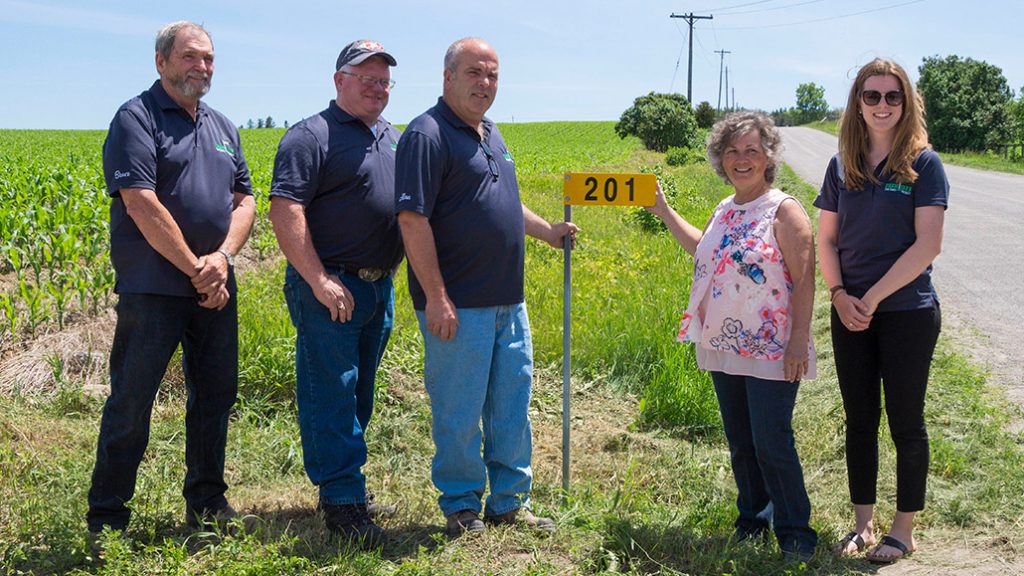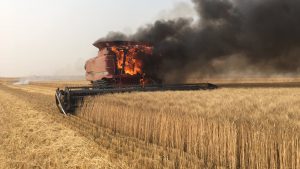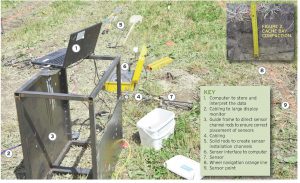Farm 911: The Emily Project
FASTER EMERGENCY RESPONSE IN THE FIELD

IT’S BEEN ONE year since The Emily Project launched, installing 911 signs in field entry ways to identify rural locations in the event of a farm accident. And the response has been overwhelming.
Farm 911: The Emily Project has seen municipalities across Ontario implement programs to establish civic addresses and 911 signs on vacant farm properties, or fields. The program has also raised awareness of the need to identify rural properties and the challenges of responding to accidents in remote rural locations.
Farm 911 was inspired by Emily Trudeau, a seven-year-old who died in 2014 when she fell out of a tractor in a farm accident on the family farm in Hastings County. Emergency responders couldn’t find the property and now the Farm 911 committee is working to make sure that doesn’t happen to anyone else.
Allan Carruthers is a Northumberland County farmer, volunteer firefighter with the Alnwick-Haldimand Fire Department, and Emily Project volunteer. He explains that, “seconds count in a medical emergency and sometimes directions aren’t good enough in a rural or remote area. GPS locations and emergency 911 signs could make a life and death difference.”
RAISING AWARENESS
The first 911 field signs were installed in Northumberland County this summer, and these signs have also been GIS located so GPS can identify the location. Northumberland County took the project one step further, designating yellow farm 911 signs for additional identification.
The Emily Project is encouraging farmers across the province to work with their municipalities to identify rural and remote locations with 911 signs.
“Any landowner in any municipality should be able to contact their local municipal office and ask about the process for getting a civic address,” says Resi Walt, committee member of The Emily Project. “The problem is, not every municipality administers it the same way. Some municipalities are even ‘confused’ when you say that the requested sign is for a farm property and they aren’t sure how it falls into their pre-existing process.”
Walt explains the project is promoting two things — that municipalities offer landowners the ability to put emergency signs on vacant farm properties and that landowners take advantage of the program.
“We’re also promoting that municipalities offer this service at a reasonable rate and the opportunity for farmers to install the signs themselves to keep costs down,” explains Walt.
Each municipality in Ontario is different, and for those who have adopted the program, the process for GIS locating and installing signs varies.
“In some areas the process is simple, fill out a form and pay a small fee to get a sign. It varies a lot, but what we’re trying to do with this project is ask municipalities to make the process as simple as possible so that landowners won’t be discouraged by the paperwork or fee,” says Walt.
Areas that have seen successful adoption of the Emily Project have local champions. Don MacLeod, chief administrative officer of Zorra Township in Oxford County, says the Farm 911 initiative was adopted after a local delegation presented to council. As a result, Zorra Township has adopted a policy for requested 911 signs for vacant properties which offers the signs at no cost.
In the Town of Caledon, the municipality is working with the Peel Federation of Agriculture to implement the plan for the project and funding has recently been allocated from the Caledon Councillors’ Community Golf Tournament to roll out the Farm 911 program.
“This is considered a new service in many areas,” explains Walt. “And we need local champions to advocate for Farm 911: The Emily Project with municipal staff and councils.”
The project website, www.farm911.ca offers information and tips for promoting the program.
SECONDS MATTER
“I want to see this project go right across Ontario and Canada,” says Carruthers. “Farm accidents happen and we need to do everything we can to prevent them and respond when needed.”
He also recommends properly training farm employees and family members on emergency response procedures, first aid, and general awareness of farm and field locations. Carruthers also suggests posting stickers in tractor cabs, farm trucks, and on cell phones that detail the locations of each field and farm in case an emergency call needs to be made.
“A difficult situation can be made easier if we have a cemented location for the response team,” says Carruthers. •


























